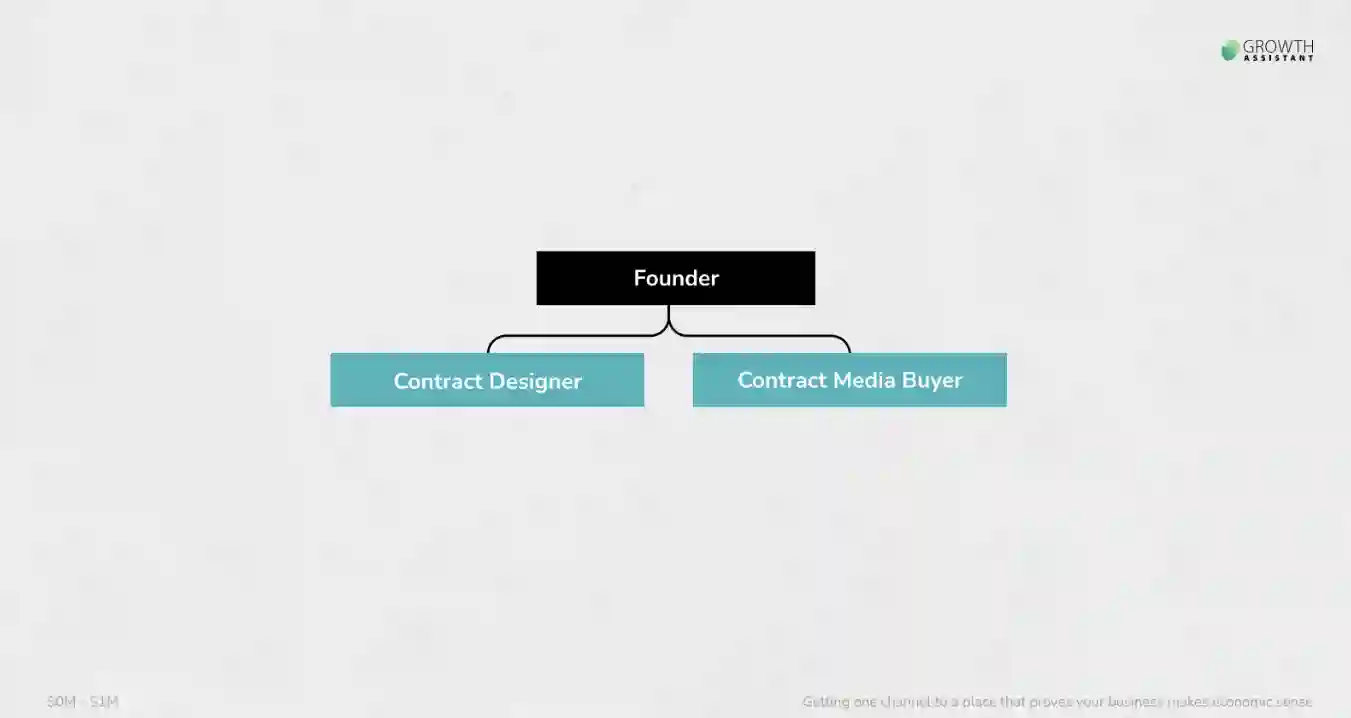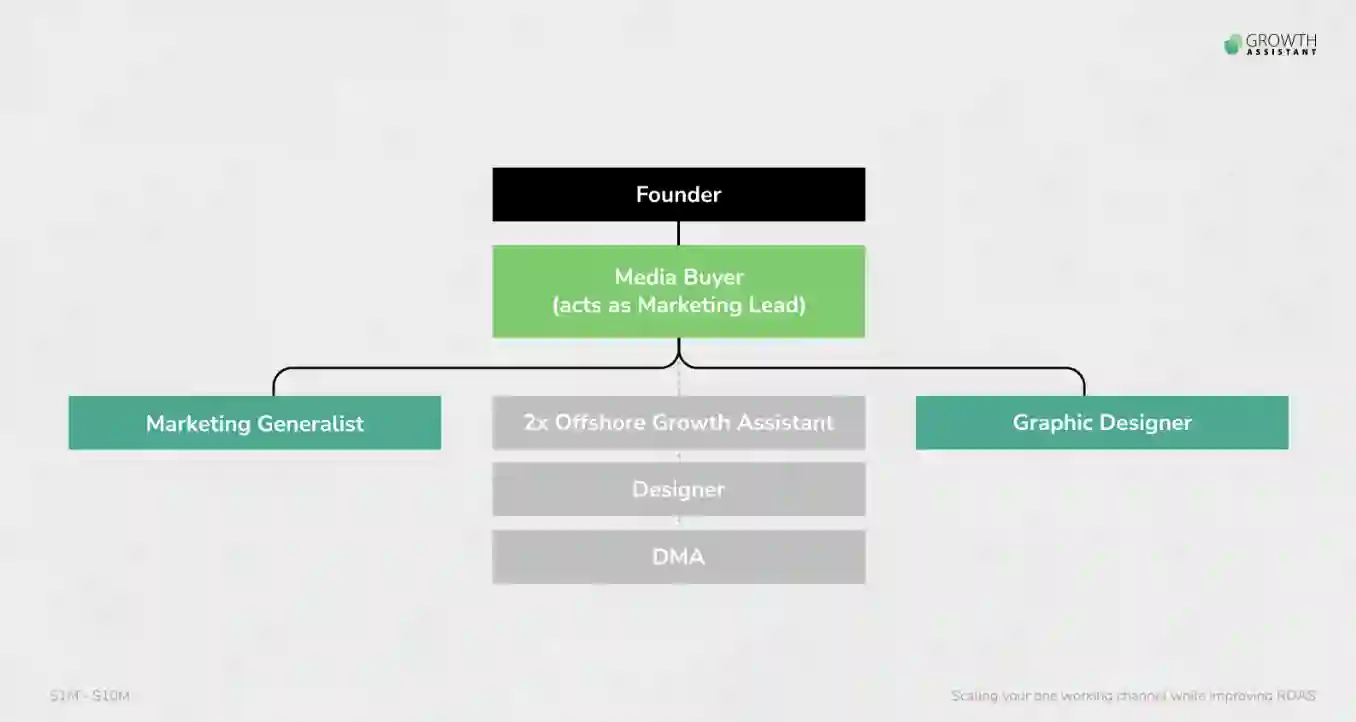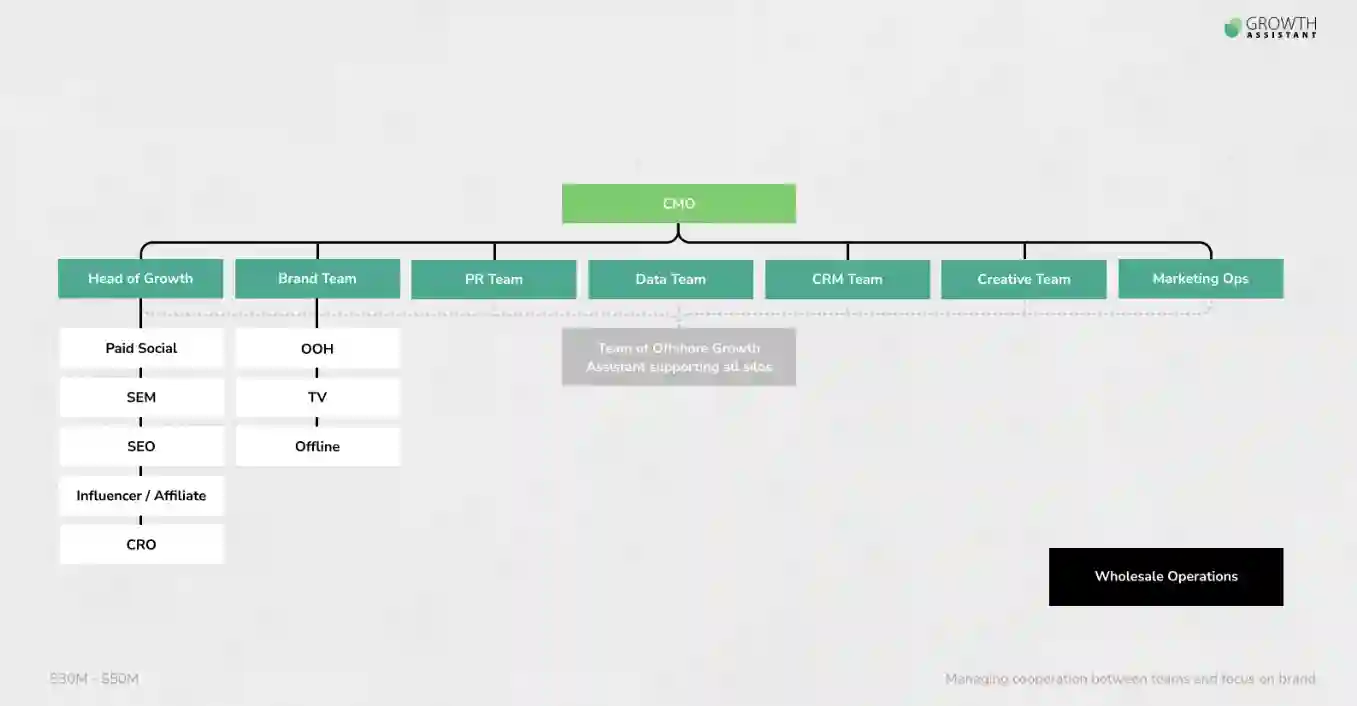TL;DR (Fast Facts)
- Audience: Founders and marketing leaders in DTC/E-commerce
- Scope: Scaling teams from $0M → $50M+ in revenue
- Structure: Stage-based models with focus areas, common mistakes, and fixes
- Highlight: Growth Assistants (GAs) provide cost-effective execution across all stages
What Is the Goal of Team Structure?
E-commerce businesses grow in stages, and each stage requires a unique team structure. The main goal is to ensure the team size aligns with the company’s revenue stage, preventing bloated headcount before the business can sustain it.
Another aim is to prevent execution gaps, making sure daily marketing and growth tasks don’t slip during busy times. Leveraging offshore talent also plays a crucial role, as it allows businesses to secure cost-effective support that takes care of execution, freeing leaders to stay focused on strategy.
How Do You Prove One Channel Works?
In the beginning, the most important priority is proving that one marketing channel can consistently acquire customers profitably. For most direct-to-consumer brands, this usually means Meta ads on Facebook and Instagram. The goal is not to test everything but to master one channel and prove the unit economics.
Founders at this stage should dedicate a large share of their time to marketing. Contractors may assist with media buying or design, but the founder must remain actively involved in testing creative variations, reviewing results, and managing spend.
A common mistake is spreading across too many platforms too early. The correct approach is to stay disciplined, focus on a single channel, refine creatives, and build repeatable results before moving forward.

How Do You Scale While Staying Lean?
At this stage, the business begins scaling but remains lean, with the primary channel still driving the vast majority of revenue. The focus should be doubling down on the winning channel, beginning to build an internal team, and integrating reporting and accountability systems.
This is the point of bringing in a marketing generalist or channel lead, a media buyer who may grow into a marketing lead, a designer for ad creatives, and two offshore marketing assistants to handle execution and reporting.
A common mistake is rushing into too many new channels or for founders to step away from marketing metrics. The solution is to continue scaling ad spend on the main channel while ensuring the founder still reviews weekly KPIs.

What Team Roles Are Needed to Diversify Channels?
By the $10M mark, the primary channel is optimized, and the brand can afford to expand. Specialized roles become critical as the business diversifies into new channels such as Google Ads, influencer marketing, organic social, and email. Processes, workflows, and reporting must be formalized.
This is when companies should consider hiring a Head of Growth, supported by a paid social manager and associate, a creative manager and team for ad production, a UI/UX and front-end developer, as well as business intelligence, data analysts, and marketing operations.
Offshore marketing talent should be embedded across silos to maintain execution. Mistakes at this level often involve over-reliance on paid media or expanding too quickly without proper systems. The fix is to add one channel at a time and create clear organizational charts, processes, and career ladders for the growing team.

How Do You Manage Cross-Team Collaboration?
At this level, the brand needs more than growth hacking—it requires a professional marketing organization. Collaboration between growth, brand, and creative teams becomes a priority. Companies should invest in brand building alongside performance marketing.
This is the point of hiring a Chief Marketing Officer to lead the department, establish dedicated teams for brand, data, CRM, and creative, and expand into PR, sponsorships, and offline media such as TV and out-of-home campaigns. Offshore assistants remain valuable in keeping tasks on track.
The most common mistake here is getting stuck between growth and brand without fully committing to either. Success lies in making a clear decision to either double down on growth or fully invest in the brand, while fostering collaboration to avoid siloed teams.

What Does a Fully Built Marketing Org Look Like?
By the time a company exceeds $51M, it has a mature organizational structure with senior leadership across all marketing functions. The focus shifts to scaling with leadership depth across performance, brand, and creative while balancing data-driven marketing with brand investment.
Teams now include CMOs, VPs, and directors across functions, along with senior managers for product, PR, partnerships, and social. Companies at this level typically employ between 34 and 76 team members, supplemented by agencies and contractors.
Mistakes often come from over-hiring without strategy or losing sight of KPIs. The fix is to remain data-driven and maintain balance between brand and performance.
What Are the Outcomes of Structured Scaling?
When teams grow in sync with revenue stages, businesses gain several advantages. They can test creative faster, outpacing competitors. ROAS improves as scaling aligns with available resources.
Founder burnout decreases since leaders can delegate effectively. Execution also becomes more consistent, with offshore talent ensuring nothing falls through the cracks.
Key Takeaways
From $0M to $1M, founders should focus on one channel and lead marketing themselves. At $1M to $10M, the lean team should expand with offshore assistants handling execution. Between $10M and $30M, specialists can be added to diversify channels.
At $30M to $50M, companies need a CMO and should invest in collaboration and brand. Beyond $51M, the structure should include senior leadership across all functions, supported by agencies.
Want to Scale Smarter Without Burnout?
What if you could stay focused on strategy while offshore talent took care of the daily grind such as posting, reporting, and tracking? Book a call with GrowthAssistant today and discover how offshore marketing talent can help you scale with less stress.






.svg)


